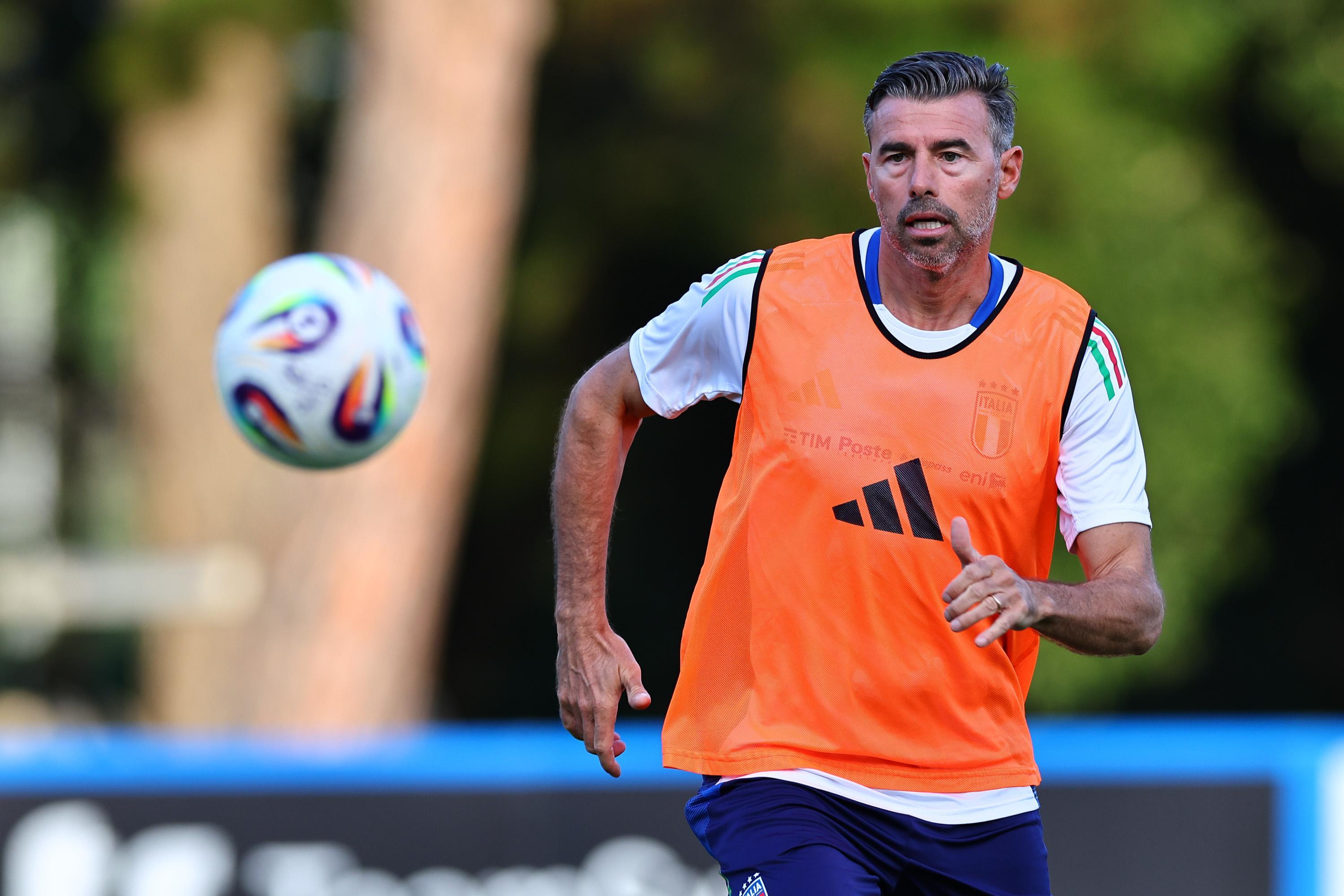PHOTO
Italy’s Under-21s returned to the Olympic Training Centre in Tirrenia on Friday evening after the loss in Poland and are now fully focused on the match against Montenegro, which will kick off at 18:30, 18 November, at the City Stadium in Nikšić. Now three points behind the Poles, the Azzurrini begin a run of five fixtures that will conclude in 11 months’ time, on 5 October 2026, with the aim of reclaiming first place – the only position that guarantees progression to the Euro 2027 finals in Albania and Serbia.
The first of those challenges comes with several dangers attached: Montenegro proved awkward opponents in the reverse fixture (a 2–1 comeback win for Italy on 5 September in La Spezia), at home they have won both matches so far against Sweden and North Macedonia (7–2 on aggregate), and on Friday they picked up a third win of the campaign to move within three points of Italy. To that, add the absence of Koleosho and Palestra, who are suspended and already back with their clubs, having played every minute of the previous five qualifiers, and the warning signs are clear.


BARZAGLI
The team are fully aware of the importance of the match, as assistant coach Andrea Barzagli emphasised: “On Friday I saw the boys disappointed at full-time, because they knew they’d put in an excellent performance, even if the result didn’t reflect it. But from yesterday onwards the focus has been on Montenegro: we’ll need our usual approach, as it’s a game we have to attack from the first whistle, and we’ll need quality and personality. We know what the difficulties are, and we’re preparing for them.”
The coach addressed how the squad have processed the defeat: “In these situations, you deal with it by helping the players understand the nature of the performance. We rewatched and analysed the match together. And, as Baldini said, we have to move on from that performance, keep following the path we set out in September, and continue training well. This is a group of players who, from day one, have never held back in training and love being together. And I can assure you, not one of them is thinking ahead to the return fixture against Poland. They know the only match that matters is the next one.”


Three months into his role on the Under-21 staff, Barzagli also reflects on this early stage of his journey: “This is all new for me. I’ve joined a staff that Baldini brought together, and they are all very professional coaches and great people. I’m getting on very well with them on a personal level too. It’s a valuable learning experience; the coach is helping me understand the day-to-day workings of a team. The atmosphere is excellent, and we all work to improve, both us and the players. I’m growing in my role as well.”
Tomorrow, after a morning session (around 10:30), the team will leave Tirrenia and travel to Podgorica, before heading to Nikšić on Tuesday, the day of the match. They will return to Italy on Wednesday.
THE OPPOSITION
Coached by Goran Perišić, Montenegro have secured three wins so far, beating Sweden (2–0) and overcoming North Macedonia twice (3–2 and 2–1). In the first meeting in La Spezia, they proved a tough side to break down: they took the lead within minutes through Andrej Kostić, and only conceded twice in the final stages. Two of their three wins have come at home.
Montenegro have taken part in the Under-21 European Championship only since 2009, while between 1978 and 2002 Montenegrin players represented Yugoslavia, and between 2003 and 2006 Serbia and Montenegro – the federation formed in February 2003, comprising the republics of Serbia and Montenegro plus the autonomous regions of Vojvodina and Kosovo. Since 2009 there have been four direct meetings: three Italian wins and one draw. The first came on 4 June 2014, a 4–0 friendly win in Castel di Sangro; during the 2021–23 cycle, Italy narrowly won 1–0 at the Menti in Vicenza (Colombo) and drew 1–1 in Podgorica (S. Ricci); and most recently came the comeback win in La Spezia (2–1, Lipani and Koleosho). Between 2003 and 2004 there were also four meetings between Italy and Serbia and Montenegro: two qualifiers (one win each in Avellino and Vojvodina) and two matches in the finals (both Italian wins, 2–1 in the group stage and 3–0 in the final, both in Bochum). That team featured four Montenegrin players: Marko Baša, Andrija Delibašić, Simon Vukčević and Radomir Dalović.
This will be Italy’s second-ever Under-21 match on Montenegrin soil: the first was the 1–1 draw in Podgorica on 25 March 2022. This time, the match will be played at the Gradski Stadion in Nikšić, one of the country’s major industrial centres. The stadium, home of Sutjeska, has a 105m x 70m pitch and holds 5,214 spectators, following its 2024 renovation.
EURO UNDER-21 – GROUP E
Matchday 6:
Armenia vs Sweden (Tuesday, 12:00)
North Macedonia vs Poland (Tuesday, 17:00)
Montenegro vs Italy (Tuesday, 18:30)
Standings after 5 matches: Poland 15, Italy 12, Montenegro 9, Sweden 6, North Macedonia 3, Armenia 0.
SQUAD LIST
Goalkeepers: Diego Mascardi (Spezia), Edoardo Motta (Reggiana), Lorenzo Palmisani (Frosinone).
Defenders: Davide Bartesaghi (AC Milan), Gabriele Calvani (Frosinone), Pietro Comuzzo (Fiorentina), Niccolò Fortini (Fiorentina), Gabriele Guarino (Empoli), Riyad Idrissi (Cagliari), Filippo Mane (Borussia Dortmund), Brando Moruzzi (Empoli).
Midfielders: Tommaso Berti (Cesena), Matteo Dagasso (Pescara), Giacomo Faticanti (Juventus), Luca Lipani (Sassuolo), Niccolò Pisilli (Roma), Kevin Zeroli (Monza).
Forwards: Francesco Camarda (Lecce), Alphadjo Cissè (Catanzaro), Luigi Cherubini (Sampdoria), Seydou Fini (Genoa), Dominic Vavassori (Atalanta).
SCHEDULE
Monday 17 November (CPO Tirrenia)
10:30 – Training session
16:20 – Transfer Tirrenia to Podgorica
Tuesday 18 November (Nikšić, City Stadium)
18:30 – Montenegro vs Italy (Euro U21 Qualifying, Matchday 6)
Wednesday 19 November
09:55 – Return flights Podgorica to Milan / Rome
